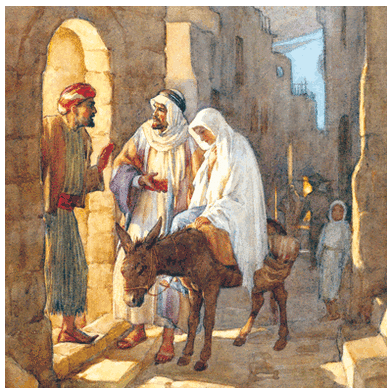
"Luke's infancy narrative therefore presupposes the following events. Joseph took his betrothed Mary from Nazareth to Bethlehem (2.5). Bethlehem was his hometown (v. 3) and, in accordance with the patrilocal marital customs of the day, it must also have been the place where they finalized their matrimonial arrangements by bringing her into his home. As a newly married man, he no longer would have to sleep in the main room of the village house with his other relatives, but he and his bride could stay in a marital chamber attached to the house until they could get a place of their own. They stayed there for some time until she came to full term (v. 6), and she gave birth to Jesus in the main room of the house rather than in her marital apartment because it was too small, and she laid the newborn in one of those mangers (v. 7) common to the main room of an ancient farmhouse. After staying at least another forty days in Bethlehem (v. 22; cf. Lev 12.2–8), Joseph and Mary eventually moved to Nazareth to make their home together in her family's town (v. 39; cf. 1.26–27). To be sure, this scenario as presupposed in Luke's infancy account diverges greatly from the conventional Christmas story. There is no inn, no innkeeper, and no stable. But it is grounded in a careful exegesis of the text."
This is one of those articles that can be described as truly being groundbreaking. Carlson's conclusions are so convincing that it would take considerable evidence to overturn them. Indeed, some may be uncomfortable with how this evidence changes the face of the traditional Christmas story, but it is, as Carlson admits, "grounded in a careful exegesis of the text." This article needs to be circulated widely, not only among academics, but also pastors and lay people alike, because it has serious implications for how we should understand this story as told by Luke. Carlson has posted this article on his personal website and it can be found here. Happy reading and happy holidays to all!
